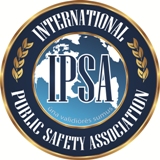| INTERNATIONAL PUBLIC SAFETY ASSOCIATION |
- Home
- Blog
Blog
Our Blog is a great opportunity to publish with us and reach a diverse and global public safety audience. We will periodically share our blog articles on social media and in newsletters. You must be an Affiliate, Associate, or Active Member. If you're not a current member, join by clicking here.
To start the process of being published follow these three required steps:
- Check to make sure you're a current Associate, Active, or Affiliate Member.
- Email a request to receive our guidelines to info@joinipsa.org
- Include the Topic you would like to address
Due to our high volume of emails, please allow 5-10 business days for our editor to respond.
For Sponsored Content (see the instructions below).
Sponsored Content Sponsored Content is available monthly to small, medium, and large organizations on public safety relevant topics for $500 USD per article. All Sponsored Content must adhere to our guidelines. To request additional information, email us at info@joinipsa.org. |
Blog Articles
